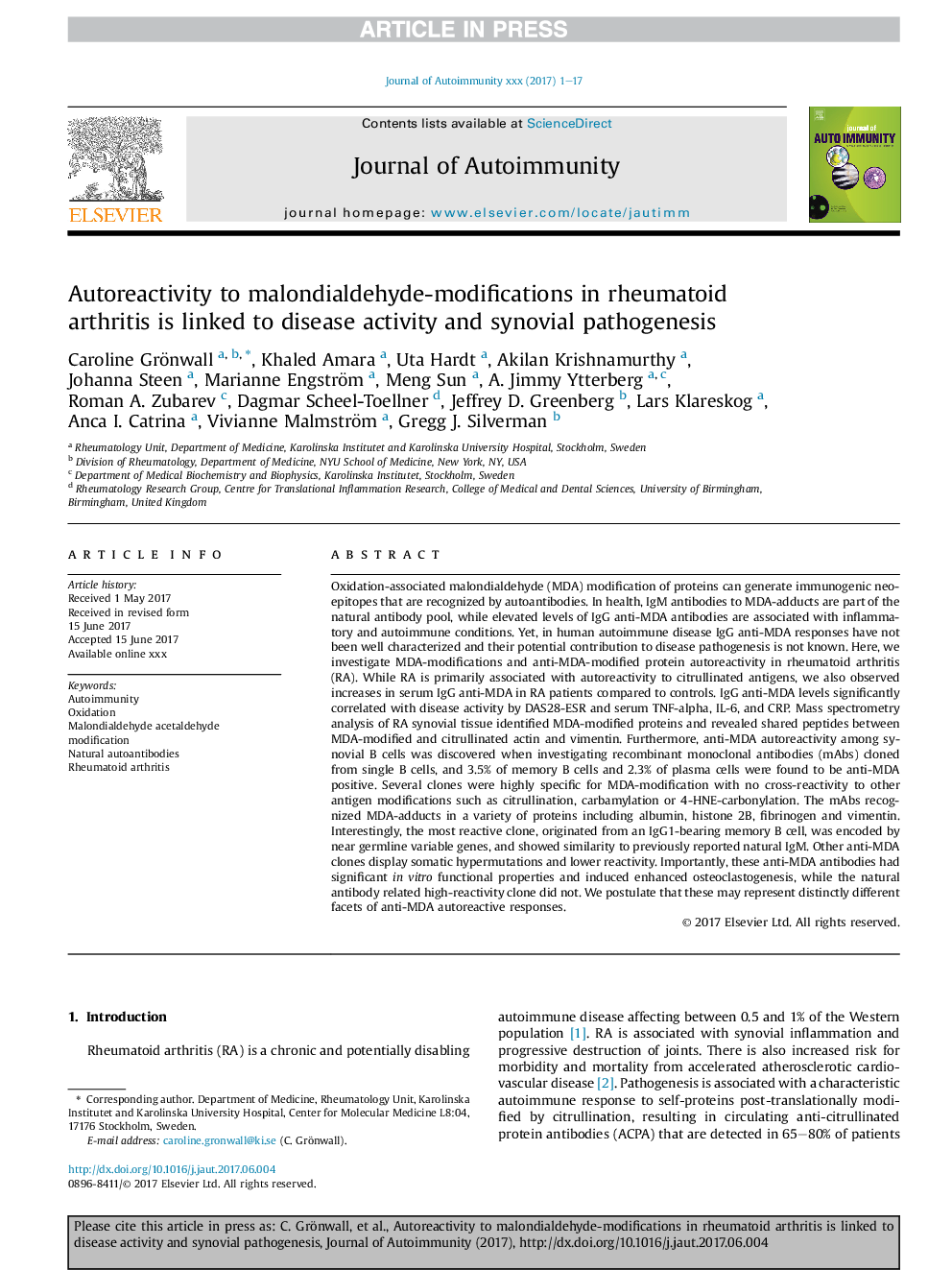| Article ID | Journal | Published Year | Pages | File Type |
|---|---|---|---|---|
| 8739622 | Journal of Autoimmunity | 2017 | 17 Pages |
Abstract
Oxidation-associated malondialdehyde (MDA) modification of proteins can generate immunogenic neo-epitopes that are recognized by autoantibodies. In health, IgM antibodies to MDA-adducts are part of the natural antibody pool, while elevated levels of IgG anti-MDA antibodies are associated with inflammatory and autoimmune conditions. Yet, in human autoimmune disease IgG anti-MDA responses have not been well characterized and their potential contribution to disease pathogenesis is not known. Here, we investigate MDA-modifications and anti-MDA-modified protein autoreactivity in rheumatoid arthritis (RA). While RA is primarily associated with autoreactivity to citrullinated antigens, we also observed increases in serum IgG anti-MDA in RA patients compared to controls. IgG anti-MDA levels significantly correlated with disease activity by DAS28-ESR and serum TNF-alpha, IL-6, and CRP. Mass spectrometry analysis of RA synovial tissue identified MDA-modified proteins and revealed shared peptides between MDA-modified and citrullinated actin and vimentin. Furthermore, anti-MDA autoreactivity among synovial B cells was discovered when investigating recombinant monoclonal antibodies (mAbs) cloned from single B cells, and 3.5% of memory B cells and 2.3% of plasma cells were found to be anti-MDA positive. Several clones were highly specific for MDA-modification with no cross-reactivity to other antigen modifications such as citrullination, carbamylation or 4-HNE-carbonylation. The mAbs recognized MDA-adducts in a variety of proteins including albumin, histone 2B, fibrinogen and vimentin. Interestingly, the most reactive clone, originated from an IgG1-bearing memory B cell, was encoded by near germline variable genes, and showed similarity to previously reported natural IgM. Other anti-MDA clones display somatic hypermutations and lower reactivity. Importantly, these anti-MDA antibodies had significant in vitro functional properties and induced enhanced osteoclastogenesis, while the natural antibody related high-reactivity clone did not. We postulate that these may represent distinctly different facets of anti-MDA autoreactive responses.
Related Topics
Life Sciences
Immunology and Microbiology
Immunology
Authors
Caroline Grönwall, Khaled Amara, Uta Hardt, Akilan Krishnamurthy, Johanna Steen, Marianne Engström, Meng Sun, A. Jimmy Ytterberg, Roman A. Zubarev, Dagmar Scheel-Toellner, Jeffrey D. Greenberg, Lars Klareskog, Anca I. Catrina, Vivianne Malmström,
